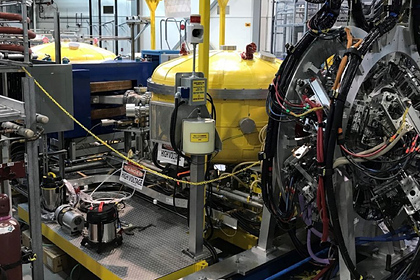Scientists at the University of Surrey (UK) reproduced the reactions occurring during a supernova outbreak in laboratory conditions using an accelerated beam of radioactive isotopes. For the first time, they measured the cross-section of the p-process, a thermonuclear reaction that occurs at the moment of the explosion of a massive star. The article was published in the journal Physical Review Letters.
During the p-process, atoms heavier than iron arise — the so-called p-nuclei, which are enriched with protons. Their origin is still not fully understood, but it is believed that the process of proton capture occurs during the collapse of the core of a star that is several times more massive than the Sun. p-nuclei make up about one percent of the heavy elements in the Solar System, but they cannot be observed directly in stars or supernova remnants due to their rarity.
The results of the new experiments indicated an increase in the production of a specific p-nucleus - strontium-84 - during the so-called gamma process. The gamma process (not to be confused with the gamma process in mathematics) proceeds at temperatures of several billion kelvin, when the photoregradation of nuclei occurs (due to high-energy photons), and a small number of p-nuclei are produced. The supposed occurrence of strontium-84 as a result of stellar explosions may explain the abundance of this element in some meteorites, for example in Allende.
Alexander Enikeev

